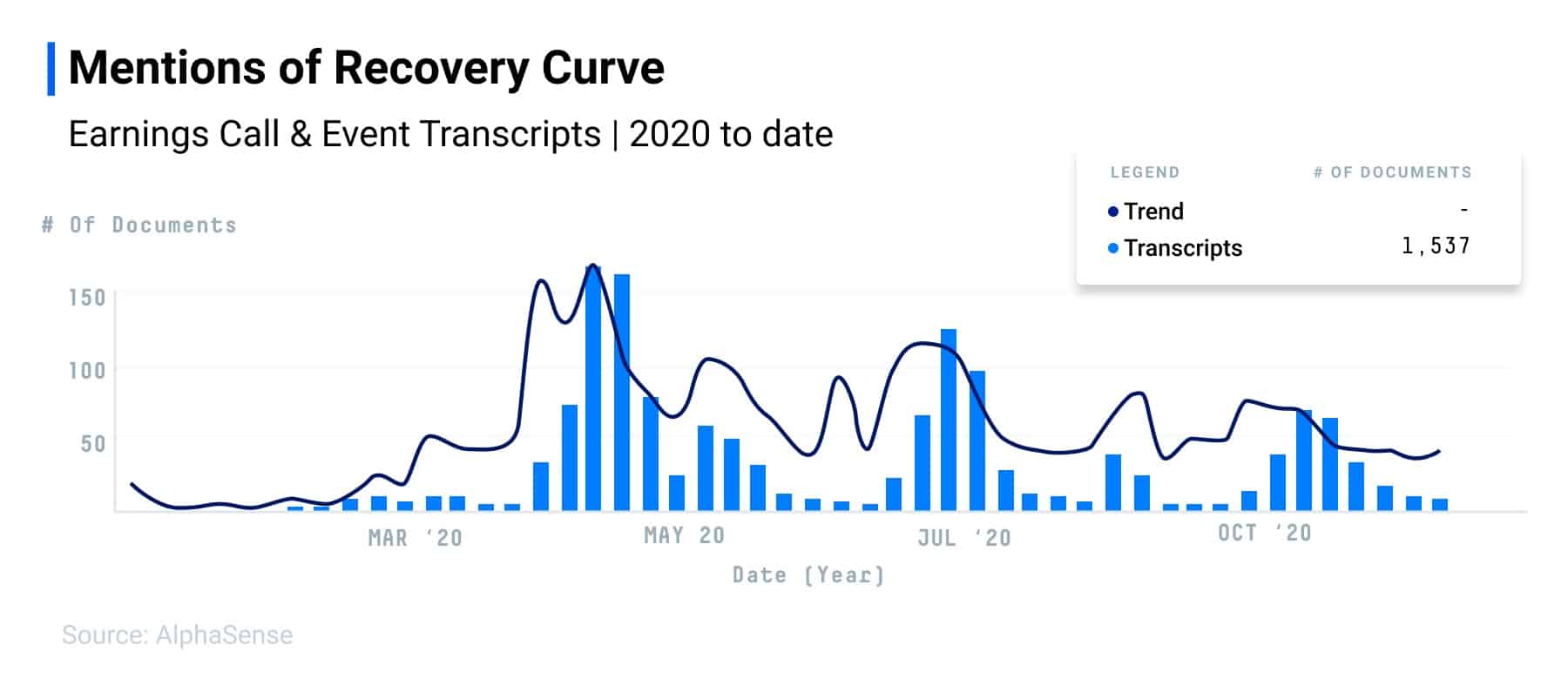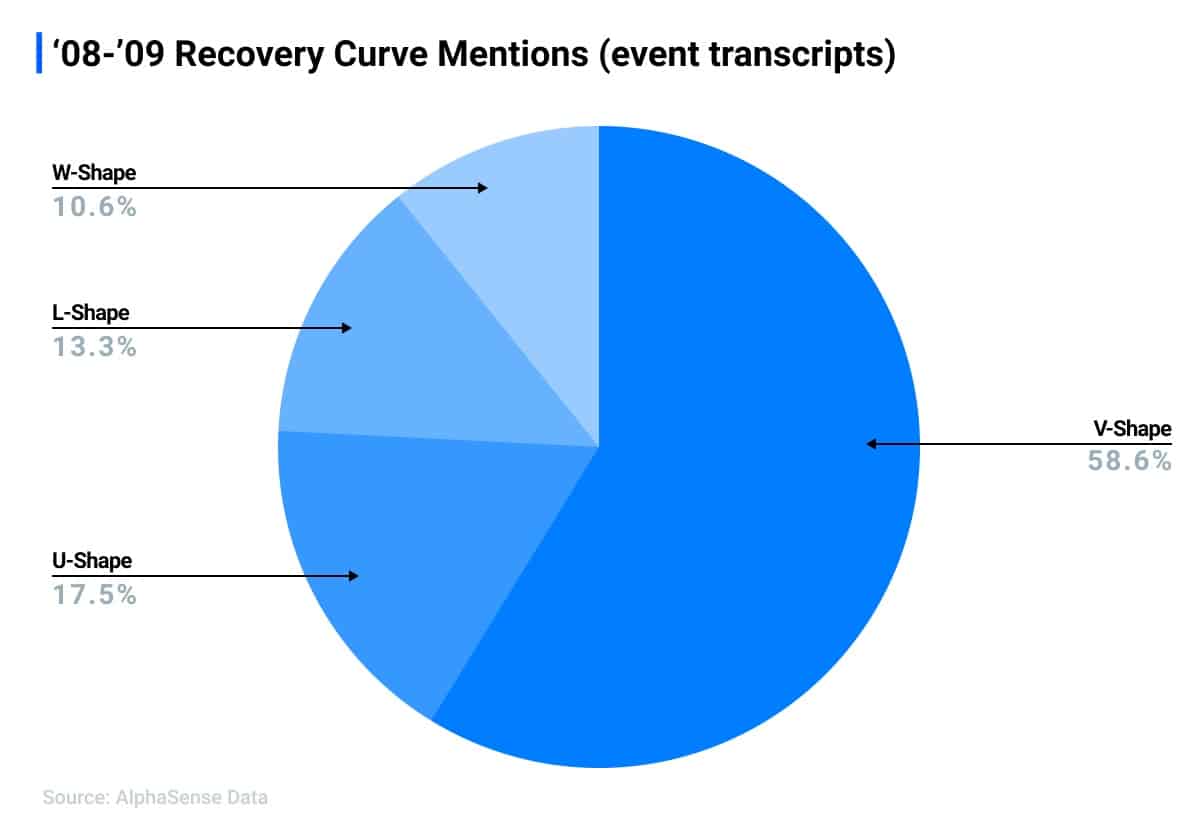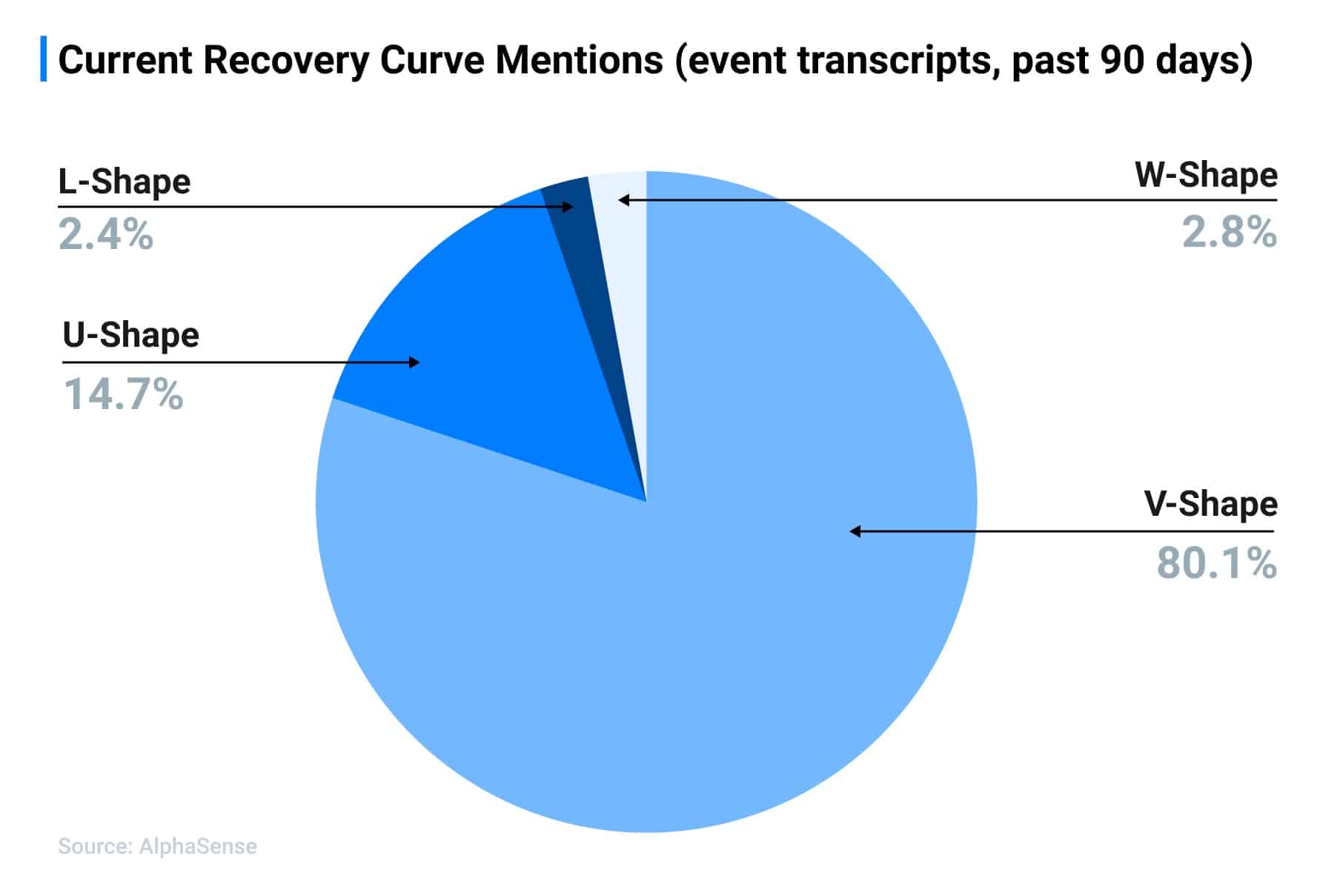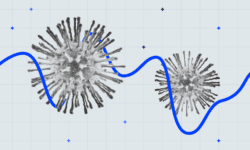With COVID cases rising at a rate not seen since the beginning of the pandemic, anxiety over a prolonged economic recovery is high. At the same time, promising vaccine news from Pfizer and Moderna has pushed the stock market to new highs, with the Nasdaq and S&P 500 reaching all time highs this week.
We dug through corporate commentary in earnings call and event transcripts to understand how executives are talking about the shape of the recovery.
AlphaSense’s AI technology picks up on nuances in human language found in SEC filings, event transcripts and thousands of premium business documents. Start your free trial of AlphaSense now or login to your account.

Executive commentary on the shape of the curve reached an all time high back in May – far exceeding the ‘08-’09 financial crisis – and that commentary rate has slowed only slightly since.
When we last examined mentions of the shape of recovery back in May, there was a wide array of opinions, with around half of corporate executives mentioning a V-Shape recovery, and the other half mentioning W, L, or U shaped recoveries. Now, it seems executive opinions have coalesced around a V shaped recovery, with 80% of transcripts mentioning V shaped recovery compared to only 15% mentioning U shaped recovery, and only about 5% mentioning W or L shaped recoveries. This is even stronger confidence than during the Great Recession, when corporate leaders were talking about a V-shaped recovery nearly 60% of the time.
For a full analysis of the shape of the recovery, check out what Deutsche Bank Chief Economist Torsten Slok shared when he sat down with us earlier this year.
Recovery Mentions in Earnings Transcripts:
Hewlett Packard Enterprise Co – December 1st
Yes. Thanks, Wamsi. I mean I will say we are very encouraged by the order momentum we have. Obviously, there’s still quite a bit of uncertainty out there. We still subscribe to our thesis that Tarek and I discussed in Q2, which is a U-shaped recovery. But what I’m really pleased is the — all the momentum and the sequential growth that we continue to see and the demand, particularly in the growth areas but also very pleased with what is pointed to the stabilization of the core business. The fact that our Compute orders grew sequentially 2% is very, very good.
Siemens AG – November 12th
As usual, this page gives you a lot more color on the regional perspective regarding the top line, with strength in China, significant declines in Germany and the U.S. and signs of stabilization in Italy. When looking at our key vertical and market expectations for fiscal ’21, we expect further recovery along a U-shaped scenario. However, despite some positive signals, the situation remains ambiguous short-term due to increasing infection rates and lockdowns, particularly in Europe.
Lyft Inc – November 10th
Thanks, John, and good afternoon, everyone. As local and state governments update rules, and cities slowly come back to life, we’ve seen an increase in activity on our platform. In terms of the shape of the recovery, rideshare rides on a year-over-year basis were down 75% in April, 70% in May and 61% in June. In the third quarter, July was down 54%, August was down 53% and September was down 48%. While rides remained down significantly year-over-year, we realized strong sequential growth across key metrics in the third quarter.
Deutsche Post AG – November 10th
Finally, the guidance for 2022 is exactly the same as it was. We don’t know yet what we will get as a V,U or L shape. The likelihood after the announcement of Pfizer and BioNTech about the vaccine makes it more likely that we will see now a faster recovery, particularly if a vaccine really is coming. But overall, we are reconfirming all our guidance we have given you in July.
Infineon Technologies AG – November 9th
The segment result amounted to EUR 62 million, resulting in a segment result margin of 5.9% after minus 2.9% in the quarter before. The margin improvement was somewhat dampened by the fact that to a large extent, we used inventories on hand to satisfy customer demand. This has caused stock levels to normalize, but underutilization charges have stayed fairly stable. The book-to-bill ratio for the September quarter was 1.3, following 0.2 in the June quarter, a clear sign that the market picture has substantially brightened. Car markets in China and also South Korea started the recovery early and showed V-shaped snapbacks to monthly levels higher than a year ago. We also noted strength in the auto sales in U.S. and in Europe. For both regions, September were the first month with year-over-year growth after the pandemic struck.
Cheniere Energy Inc – November 6th
Michael, this is Jack. I’ll start here also. I mean, this is — it’s been an incredible year. We have put a lot of precautions into our sites and our plans around COVID with biometric screening with isolating the workforce, et cetera. And I know that the numbers, at least here around Houston and Louisiana and Texas have increased, but we haven’t seen any of the increase in cases ourselves with our our workforce, which is — it’s a little bit interesting, but we are definitely on guard. As far as our customers so far, as Anatol pointed out, the recovery, especially in Asia, has been more V shaped. It continues to be stronger every day.
AES Corp – November 6th
The impact of the global lockdown on our financial results has been mostly limited to our utilities. Our generation businesses have been largely unaffected due to the take-or-pay nature of contracts and customers being deemed essential. As you may recall, in our first quarter call, we had anticipated an extended U-shaped recovery in energy demand across our markets. Since then, demand performance has been better than our expectation. For Q3, our initial projection was for a demand drop of about 5% to 7% at our U.S. utilities, while the actual result was significantly less severe than anticipated.
Mettler-Toledo International Inc – November 5th
The tailwind from COVID is mainly coming in tips business that we have with our Rainin and biotech businesses. They serve the testing markets, the COVID testing markets. So we got that tailwind, as pent-up is not labeled that way. China — to isolate the pent-up aspect of the China growth is not so easy to quantify. But I think another way to look at our numbers in China is the year-to-date. As you will recall, in the early part of the year, China had a significant decline and here, we have seen a very good recovery in Q3. And in that sense, there is a significant aspect of that is pent-up demand. We see kind of a V-shaped recovery.
Booking Holdings Inc – November 5
Over the last 7 days through yesterday, these trends have further deteriorated with newly booked room nights declining about 58% year-over-year and reported room nights declining about 70% year-on-year. This is the global average, and in Europe, these decline rates are much higher. These recent trends are a reminder that this is a fragile recovery and that we’re now seeing a second dip in our business driven by COVID. We believe that the recent increase in COVID cases in Europe and the U.S., coupled with cold weather and travel restrictions in these geographies, will result — likely result in the second dip being U-shaped and lasting until the early spring of 2021.
Abbvie Inc – October 30th
While we’re still relatively early in the integration of Allergan, the strategic merits of the combination have never been more evident. We’re already demonstrating that we have created a stronger, more diverse company with robust cash flows and multiple new growth vehicles for the long term. We now have the leading aesthetics franchise, which is demonstrating a strong V-shaped recovery as well as a highly attractive neuroscience portfolio, which delivered double-digit growth on a comparable operational basis this quarter and has significant momentum with Vraylar and our expanding migraine franchise.





